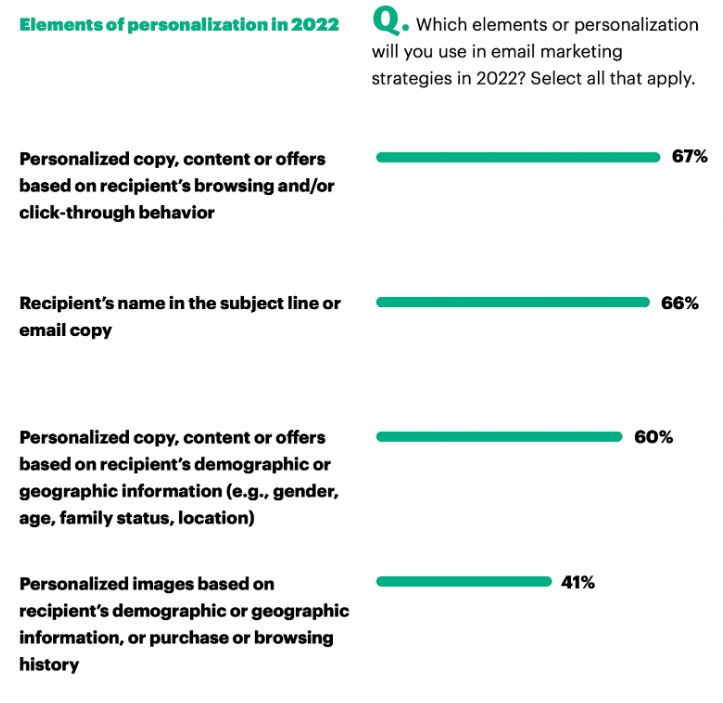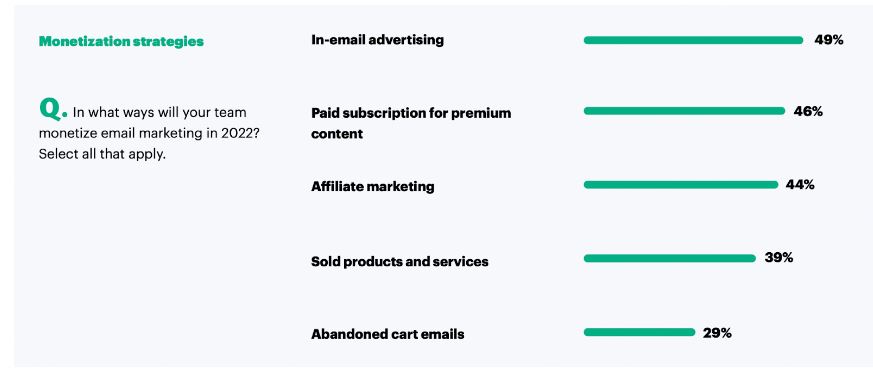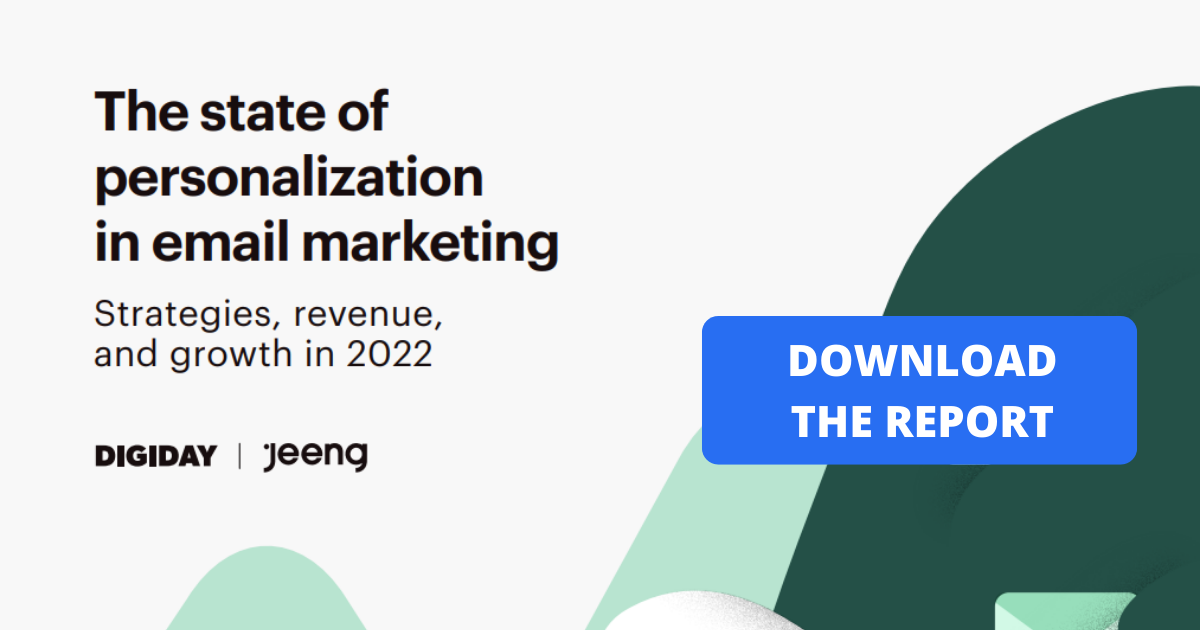Email personalization doesn’t look the same today as it did 12 months ago. And as more publishers build out their email strategies — and more consumers demand personalized experiences — it will continue to evolve, opening up new opportunities for driving revenue and engagement.
So, what exactly does email personalization look like right now and how will it change going forward?
Jeeng and Digiday teamed up to find out.
In our new report, The State of Personalization in Email Marketing: Strategies, Revenue, and Growth in 2022, we surveyed 87 respondents in the industry who either have an email personalization element currently or plan to incorporate one in the next 12 months.

“People are recognizing that [email personalization] is no longer a nice-to-have, it’s a must-have,” said Jeff Kupietzky, chief executive officer at Jeeng. “Email is the only place that publishers can control the relationship with their end user. So if they don’t have an aggressive program, they’re missing out on the best way to actually build and understand their own audience.”
Here’s a look at how publishers are currently utilizing personalization and how they plan to evolve their strategies in 2022 and beyond.
Publishers are leveling up their personalization strategies
In 2021, most respondents personalized emails by putting the recipient’s name in the subject line. Going forward, however, they’re leveling up to deliver personalized copy, content, or offers based on the recipient’s browsing history and click-through behaviors. An increasing number of publishers also plan to personalize email content based on the recipient’s demographic or geographic information.


Publishers are monetizing emails with ads and subscriptions
Publishers don’t have to wait for people to reach their site to start driving revenue. They can monetize their email content directly with personalized ads and subscriber experiences.
“Usually, the stories that are sent in a newsletter have a short preview text, and that might be enough for the reader; they might not even click through to the site at the end of the day,” said Nati Berkover, vice president of products and data science at Jeeng. “Some publishers want to make money simply from the fact that the reader opened the newsletter.”
As our survey found, almost half of publishers plan to monetize email in 2022 with in-email advertising, paid subscriptions for premium content, and affiliate marketing.

Still, that’s just the tip of the iceberg.
Ready to learn more about how publishers can drive revenue and engagement with email personalization?
Download the new report from Jeeng & Digiday: The State of Personalization in Email Marketing: Strategies, Revenue, and Growth in 2022.


